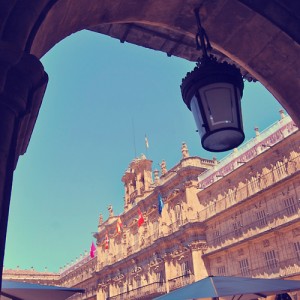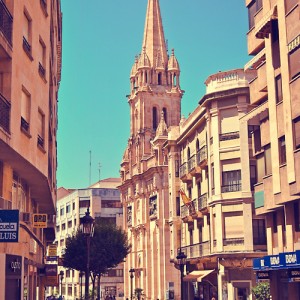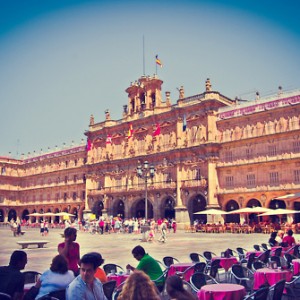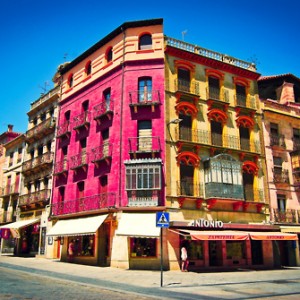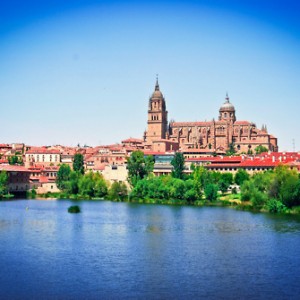Salamanca is one of those cities I wish I could live and study in for awhile. It’s big enough to keep you entertained, but not overwhelming in its size. It’s packed with students during most of the year, which equals lively nightlife, diversity and student-friendly prices in housing and bars. It’s a breeze to navigate, and absolutely easy on the eyes.
It’s known as “The Golden City” for good reason: many of its buildings are constructed of yellow Villamayor sandstone, which makes the buildings in Salamanca seem like they’re utterly glowing. The architecture is gorgeous (see above!) and the cobblestone streets and arcaded Plaza Mayor are perfect for people-watching and paseando.
But, it’s not all romance and UNESCO Heritage Sites in Salamanca. This slice of Spanish life comes at a price, and not one I’m sure I’d want to trade my Andalusian sun for. You see, they have a saying when it comes to Salamanca (and other cities like Madrid that are on the central plateau known as La Meseta):
“Nueve meses de invierno, tres meses de infierno.”
“Nine months of winter, three months of hell.”
When I visited this past summer, I was clearly in the hellish part of the year. The sun beat down relentlessly, rendering sightseeing an arduous task. Unfortunately, Salamanca was just a stop on my way from Basque Country back down to Andalucía, but from the short time I was there, I wish I had stayed longer, especially to see Plaza Mayor lit up at night.
The short time I was there, walking the same streets that the 3 Big C’s of Spanish History (Cortés, Cervantes and Columbus) once did, was enough to make me envision studying at the once highly-esteemed University of Salamanca, grabbing pinchos and cervezas for lunch in its mysterious side-streets and soaking in the pure Castellano.
But then I remember how that saying goes, and realize maybe it’s just better I forget my daydreams and plan a longer visit next time—in between winter and hell of course!
